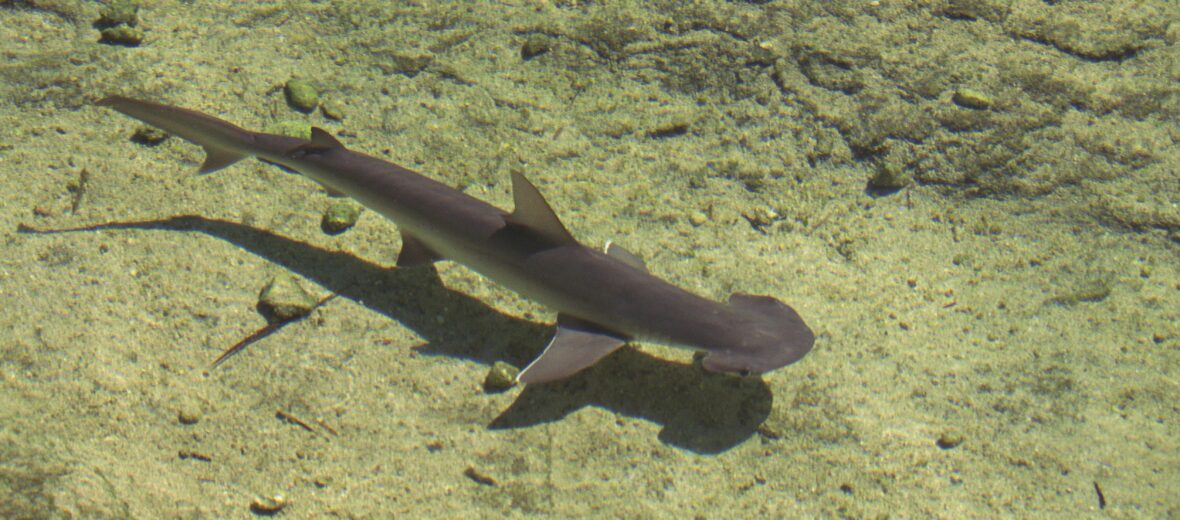
The bonnethead shark, aka the shovelhead shark, is the smallest known member of the hammerhead shark family. The bonnethead can be found in both the Pacific and Atlantic Oceans, from North America down to Ecuador and Brazil. They prefer shallow bays and estuaries with muddy or sandy bottoms and can also be found in coral reef habitats. Due to their stable numbers, these sharks are listed as Least Concern by the IUCN. This article is on special request from Andrew.
First the Stats…
Scientific name: Sphyrna tiburo
Weight: Up to 24 lbs.
Length: Up to 4.9 feet
Lifespan: Up to 12 years
Now on to the Facts!
1.) These diminutive sharks typically prey on crustaceans, octopuses, clams, and small fish. However, uncommon to all other known sharks, they also feast on sea grass. That’s right, these sharks are omnivores (eat both plant and animal matter).
2.) Bonnethead sharks are preyed on by larger sharks, like lemon sharks and tiger sharks.
3.) They are also known as bonnet hammerhead shark, bonnet shark, and bonnetnose shark.
4.) Bonnetheads are the only known sexually dimorphic species of shark, in that males look notably different than females. Females have a broadly rounded head, where males possess a defined bulge along the anterior margin of the cephalofoil. Basically, males look more like hammerheads than females.
5.) The bonnetheads typically school in groups of up to 15 individuals. However, schools of up to a couple hundred, or even a couple thousand have been witnessed.
But wait, there’s more on the bonnethead shark!
6.) In order to ward off predators, as well as to communicate with other bonnetheads, these fish secrete a special chemical, called ‘cerebrospinal fluid’ or ‘Cl- excess’.
7.) Females are viviparous (produce living young, not eggs).
Did you know…?
Only 1 unprovoked attack on a human has ever been recorded. Typically they steer clear of humans.
8.) Female sharks produce up to 12 pups each breeding season.
9.) Parthenogenesis has been exhibited in bonnethead sharks. This is where the female can reproduce young sharks without the aid of a male mating with her first.
10.) Like most other sharks, they must continually swim to keep oxygenated water flowing over their gills, to avoid drowning.
Now a Short Bonnethead Shark Video!
Also, check out the Critter Science YouTube channel. Videos added frequently!
Want to suggest a critter for me to write about? Let me know here.



